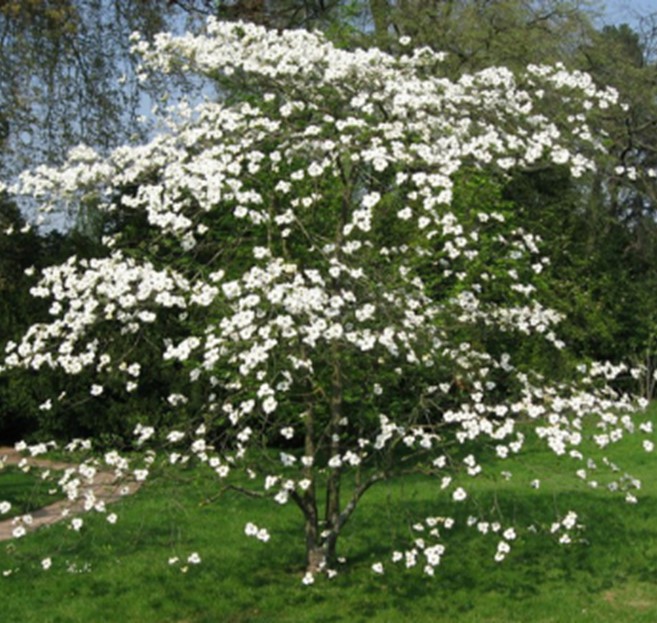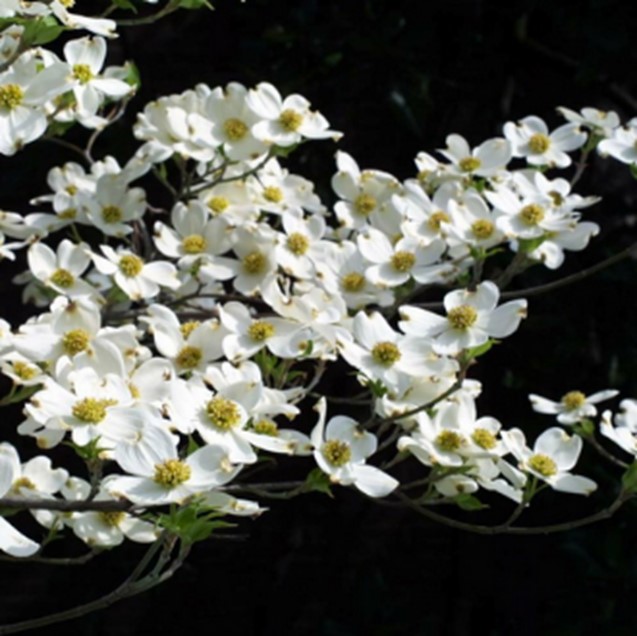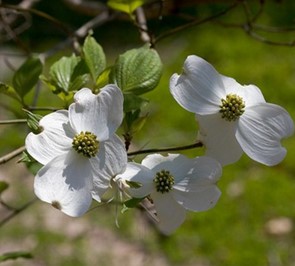Dogwood White Flowering
Cornus florida white



Characteristics
- Type: Tree
- Zone: 5 – 9
- Sun: Full Sun, Part Shade
- Height: 15 – 20 Feet
- Spread: 15 – 20 Feet
- Space: 15 – 30 Feet
- Blooms: Spring
- Bloom: White
- Water: Average
- Maintenance: Low
- Soil: Moist, but Well Drained
- Deer Resistant
Culture
White Flowering Dogwood performs best in part shade in fertile, evenly moist, acidic to neutral, well drained soils. Tolerates full sun, but tends to be denser. Keep roots cool with a mulch in summer and provide shelter in exposed locations. A magnificent landscape tree regarded by many gardeners as one of the best small flowering trees. The beautiful bloom of the dogwood is one of the first signs of spring in East Texas forests. While pretty to look at, the flowering dogwood also provides food for many animals. Red fruits develop in the fall. Mammals, from squirrels to deer, and at least 28 bird species, eat the fruit. Seeds are dispersed through animal droppings and germinate the following spring. Flowering dogwoods live up to about 80 years.
Noteworthy Characteristics
Noted for its 4 seasons of interest, this dogwood is a small deciduous tree adorned with a broadly conical canopy. In spring, profuse star-like blooms, 3-4 inches across usually appear before the first leaves. Blooms consist of four narrowly pointed white bracts which surround the center cluster of tiny green flowers. The blossoms give way to rounded, glistening orange-red fruit in summer, which may persist until late in the year unless devoured by hungry birds. In summer, its canopy of layered branches of mid-green leaves provide shade and beauty. In the fall, it offers spectacular bright color when its foliage turns attractive shades of maroon and scarlet. Light gray and smooth when young, the bark becomes gray-brown and develops a distinctive pattern that looks like alligator skin as the tree matures, adding interest to the winter landscape.
Problems
Generally, pest free.
Garden Uses
Specimen tree near patios or in lawns; shrub borders; woodland gardens; naturalized areas.